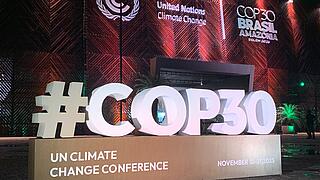Long-distance travel without flying – how does that work?

Ohne Flugzeug in den Urlaub
©plainpicture / Malte Mueller
Back in 2019, Oeko-Institut devoted its donation-funded project ‘Flying and Climate’ to the specific climate impacts of air traffic. Today, air traffic accounts for around 2.5 percent of global CO₂ emissions. In addition, there are non-CO2 effects such as particulate matter, water vapour and cirrus clouds that form from contrails, which also have an impact on the climate. According to the European Aviation Environmental Report 2025, the uncertainties surrounding these effects are even eight times higher than for CO2. What does this mean in concrete terms for air travel?
CO2 emissions from flying
The CO2 calculator made available by the German Environment Agency can be used to calculate CO2 emissions in various areas, including European and transcontinental air travel. It shows that air travel is particularly harmful to the climate compared to other modes of transport. According to this, a flight from Berlin to the Canary Islands and back causes emissions of around 1,700 kg of climate-damaging CO2 equivalents (CO2eq) per person – equivalent to a car journey (with a combustion engine) of around 9,000 kilometres. A flight from Germany to the Maldives and back generates around 2.8 tonnes of CO2eq per person, which is equivalent to travelling approximately 13,000 km by car. By way of comparison, the average annual mileage of a car in Germany in 2023 was 12,309 kilometres, according to the Kraftfahrt-Bundesamt (KBA).
Flying also has other negative consequences: in addition to the waste generated by disposable packaging, for example, it deteriorates local air quality and can cause health problems due to aircraft noise. As in all areas of transport, emissions must be reduced.
Policy measures in international aviation
At the global level, the International Civil Aviation Organization (ICAO) is responsible for international air transport. It is a specialised agency of the United Nations and adopts regulations for international air transport. In 2016, the ICAO adopted the Carbon Offsetting and Reduction Scheme for International Aviation (CORSIA), which introduced a global compensation mechanism: Since 2020, the aviation industry has only been allowed to grow in a CO2-neutral manner. Any additional tonnes of CO₂ can be offset by purchasing CO₂ certificates from climate protection projects or by using more climate-friendly fuels. The mechanism is still in its pilot phase, in which countries can participate voluntarily. CORSIA will only become mandatory for all countries from 2027. Countries with only a small amount of air traffic are exempt, and the climate impact of non-CO2 effects is not taken into account. In addition, the quality of the offset certificates is questionable. Two years ago, ICAO member states set themselves the goal of reducing CO2 emissions in international aviation by 5 per cent by 2030 by using sustainable aviation fuels (SAFs) and other technologies, and of achieving net-zero emissions by 2050. However, CORSIA is not a sufficient mechanism for this, and no further measures have been decided upon to date.
There are now two important instruments at EU level. Firstly, there is the European Union’s Emissions Trading System, which puts a price on CO2 emissions from intra-European flights. Secondly, the ReFuelEU Aviation Regulation focuses on the increased use of sustainable aviation fuels (SAFs) as the most powerful instrument for reducing CO2 emissions. According to this, the share of SAFs at European airports should be 2 per cent from this year, with an increase to 70 per cent by 2050 planned.
The future of flying
SAFs, which are produced from sustainable raw materials, can significantly reduce life cycle emissions compared to fossil kerosene. However, the share of SAFs in aviation fuel consumption is still minimal at present: SAF accounts for only about 0.1 per cent of total aviation fuel consumption. The recently introduced ReFuelEU Aviation Regulation has yet to take effect, but there is also a lack of political incentives at the global level from the ICAO. In the EU, but also globally, in addition to SAF quotas and incentives on the demand side, investment security on the supply side is particularly important as production capacities for SAFs must be increased. In addition to direct subsidies, mechanisms that guarantee long-term contracts, such as the trade-orientated mechanism for green hydrogen H2Global, are a good measure.
However, avoiding flying wherever possible remains the best strategy for sustainable travel. Electric cars, buses, trains and even bicycles are options, in some cases even for long-distance travel. And if air travel cannot be avoided, then economy class is better than business class, direct flights are better than flights with stopovers and longer stays – also combined with business trips.
Nora Wissner is an expert on climate policy and climate change mitigation in the shipping and aviation sectors, and she works in the Energy & Climate Division at our Berlin office.
Further information
Oeko-Institut's 'Flying and climate protection' website
Study 'Policy incentives for the uptake of sustainable aviation fuels (SAFs)'
Policy brief 'Aviation in the EU climate policy'
Oeko-Institut's 'Aviation and maritime transport' theme page




